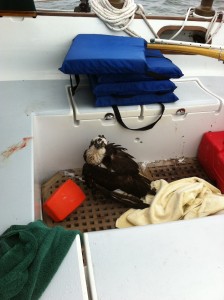#Thankful
‘Tis the season for osprey nest platform repairs — and being thankful for the volunteers who make it happen!
by Ben Wurst, Habitat Program Manager

After migratory birds depart, leaves fall and northwest winds prevail, a small group of dedicated volunteers descend on our coastal saltmarshes. They’re there to maintain osprey nest platforms. Around 75% of our nesting ospreys rely on these wooden structures to reproduce. They were used to help jumpstart the early recovery efforts of ospreys in coastal New Jersey, where much of their native habitat was lost to development in the 1950-60s. Today many of these platforms are reaching their life span or are very close.
Continue reading “#Thankful”